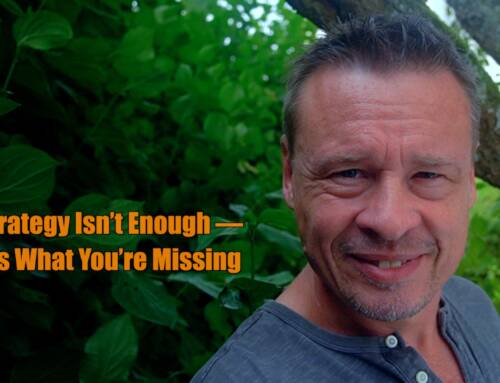Theodore W. Adorno once remarked that the distinction between theory and practice, in itself, is a theoretical concept. This philosophical insight sets the stage for understanding the complexities of communication strategy within development projects.
The Gap Between Theory and Practice
Delving into communication theory and strategic planning in development cooperation reveals an enduring issue – the disconnect between theory and practice. Strategies are meticulously crafted on paper but often falter when faced with the realities of implementation. Why is this so?
One recurring problem in development cooperation is the absence of a robust content strategy. While overarching strategies are devised, the critical aspect of content creation is often overlooked. Who will compile, produce, identify, and source the various elements of content? This practical issue is often overshadowed by theoretical planning.
Drawing Inspiration from Wise Generals
To address this challenge, it’s valuable to draw inspiration from the wisdom of historical generals. They meticulously considered the givens: the makeup of their forces, terrain, morale, and weather, before devising their plans — meaning they adjusted their goals to what was doable. They did not rely on the assumption that some allies supplied their troops on the day of the battle only. If they did, history tells us that this usually did not work out for them. Similarly, in developing a communication strategy, it’s essential to evaluate definitely available resources, particularly your team. (see Robert Greene, Daily Laws)
The Pitfalls of Assumptions
While supplementing your team with external resources like consultants or agencies can be beneficial, it’s fraught with assumptions. Often, projects assume that internal staff will be freed up for the communications tasks or that external capacity can alleviate their workload. Management makes a statement on the importance of communications but when it comes to actual prioritization it’s shoved back down on the list. And when it comes to hiring external communication support the drafted ToR often inadequately specifies the communications needs at hand, which is due to a lack of senior communications expertise on the team.
Start with What You Have
Shift the focus to your existing resources. Analyze capacities, capabilities, and available resources. When you decide on supplementing with external consultants, make sure you have someone who has insight enough into communications to formulate conducive ToRs. Then consider the working environment of your team, whether in-office or in the field. Recognize that diverting staff from their core competencies to communication tasks can negatively impact morale.
Acknowledging the Importance of Communication
Communication work is often undervalued, leading to reluctance among team members. Actions should align with the stated importance of communication. The broader project landscape, including beneficiaries, sponsors, and donors, should not treat communication as an afterthought but recognize its pivotal role in achieving certain project goals.
By considering these factors, you establish a strong foundation for your communication strategy. It not only supports overarching goals but also serves as the basis for specific objectives within your plan.
Emphasizing Specific Goals
Don’t get lost in the pursuit of increased readership and engagement metrics. That is not really your goal. Focus on conveying predefined messages and drive actions. Each piece of content should have a specific target in that sense. That people read it is an important step but it is not your ultimate target with the piece and most common electronic quantifications don’t measure the right indicators.
When constructing content or planning your strategy, dig deeper into your existing tools, tactics, and materials. Ground yourself in reality rather than an idealized plan. Consider your team’s unique strengths and maximize available resources creatively. When it comes to evaluation consider a qualitative mini survey that checks for message penetration.
Success in strategy hinges on making the most of existing resources. Embrace what you have, and consider everything else as supplementary, not foundational.
Types of Failures in Development Cooperation
Shifting the focus to relative failures in development cooperation, I believe we observe quite a number of them. Discussions often revolve around attempts to implement certain approaches without adequately studying past cases. Knowledge management processes exist but materials often go unread, highlighting a disconnect — besides really interesting information is usually contentious and is not put into writing.
One prevalent issue is the misrepresentation of basic failures as groundbreaking intelligent failures — as if innovative hypotheses were tested. Meanwhile the failures were caused by simple disregard of already existing information on what doesn’t work. This misleading portrayal impedes genuine innovation in development cooperation. True innovation should encompass overall process improvements, rethinking aid delivery, and reevaluating beneficiary-focused approaches.
The Call for Process Innovation
Development cooperation organizations must comprehensively reevaluate their delivery methods. While overarching strategies evolve, day-to-day processes remain stagnant. Process innovation is essential for genuine progress.
Real progress in development cooperation necessitates more than discussing failures; it requires a fundamental shift in how projects are approached and implemented. Let’s move beyond the illusion of innovation and genuinely examine our processes for meaningful change.
As I say in the teaser to my online course on setting up a communications strategy for projects in development cooperation, everything is about the goal and focusing on what the audience wants. But you’ll also hear me saying that you need to take a look at the people you should get on board when you’re busy designing a strategy as well as the kind of resources you need to consider beforehand.





Leave A Comment